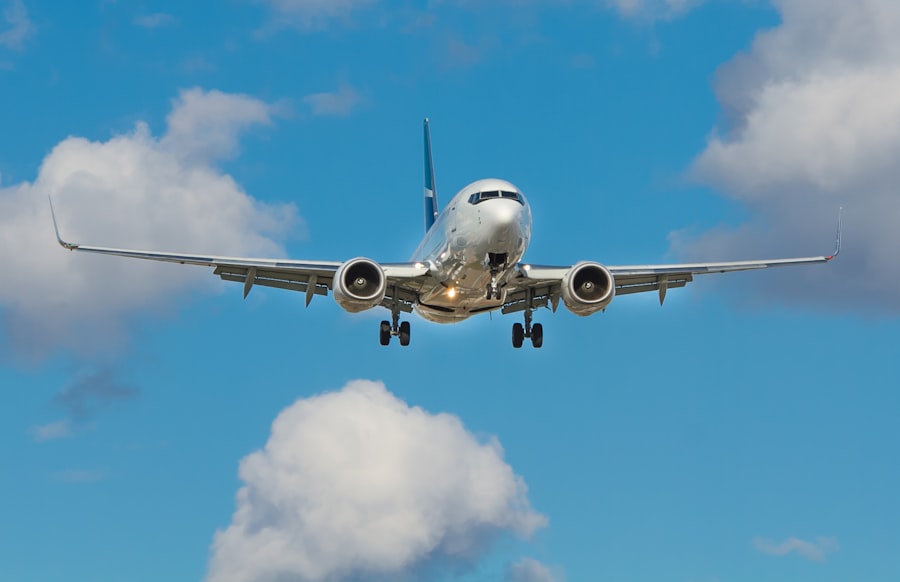
Air crew members play a pivotal role in the aviation industry, serving as the backbone of airline operations. This group encompasses a variety of professionals, including pilots, flight attendants, and other essential personnel who ensure the safety and comfort of passengers during air travel. The responsibilities of air crew members extend beyond merely operating an aircraft; they are tasked with managing emergencies, providing customer service, and maintaining communication with ground control.
The dynamic nature of their work requires a unique blend of technical skills, interpersonal abilities, and a deep understanding of aviation regulations. The significance of air crew members cannot be overstated. They are often the first point of contact for passengers, setting the tone for the entire travel experience.
In addition to their operational duties, they are also responsible for adhering to strict safety protocols and regulations established by aviation authorities. This multifaceted role demands a high level of professionalism and adaptability, as air crew members must navigate various challenges that arise during flights, from turbulence to passenger emergencies. As the aviation industry continues to evolve, the role of air crew members remains crucial in ensuring safe and efficient air travel.
Key Takeaways
- Air crew members are responsible for ensuring the safety and comfort of passengers during flights, and may include roles such as pilots, flight attendants, and air traffic controllers.
- Education and training requirements for air crew members vary depending on the specific role, but typically include a high school diploma or equivalent, as well as completion of a training program or certification.
- Job duties and responsibilities of air crew members may include conducting pre-flight checks, ensuring passenger safety, providing customer service, and communicating with air traffic control.
- Career opportunities and advancement for air crew members may include moving up to higher positions within the airline industry, such as becoming a senior pilot or chief flight attendant.
- The job outlook for air crew members is generally positive, with opportunities for growth in the airline industry, and salaries can vary depending on the specific role and level of experience. The work environment and schedule for air crew members can be demanding, with long hours and frequent travel, but also offer the opportunity to visit new places and meet new people.
- Skills and qualities needed for success as an air crew member include strong communication and customer service skills, the ability to remain calm under pressure, and a commitment to safety and professionalism.
- In conclusion, a career as an air crew member can be rewarding and offer opportunities for growth and advancement within the airline industry. For further exploration, individuals interested in pursuing a career as an air crew member can explore training programs, job opportunities, and industry resources through organizations such as the Federal Aviation Administration (FAA) and the International Air Transport Association (IATA).
Education and Training Requirements
To embark on a career as an air crew member, individuals must meet specific educational and training requirements that vary depending on their role. For pilots, a bachelor’s degree is often recommended, although not always mandatory. Most aspiring pilots pursue degrees in fields such as aviation, aerospace engineering, or related disciplines.
Additionally, they must obtain a commercial pilot’s license from the Federal Aviation Administration (FAA) or equivalent regulatory body in their country. This process involves rigorous training that includes both ground school and flight hours, culminating in a series of examinations to demonstrate proficiency. Flight attendants, on the other hand, typically require a high school diploma or equivalent, although many airlines prefer candidates with some college education or experience in customer service.
Once hired, flight attendants undergo extensive training programs provided by their respective airlines. These programs cover a wide range of topics, including safety procedures, emergency protocols, first aid, and customer service skills. Training often includes simulated flight scenarios to prepare attendants for real-life situations they may encounter while in the air.
Continuous education is also essential, as regulations and safety protocols evolve over time.
Job Duties and Responsibilities

The job duties and responsibilities of air crew members are diverse and can vary significantly based on their specific roles within the aviation industry. Pilots are primarily responsible for navigating and operating the aircraft safely from takeoff to landing. This includes conducting pre-flight inspections, communicating with air traffic control, and making critical decisions during flights.
They must also monitor weather conditions and manage in-flight systems to ensure optimal performance. The role requires not only technical expertise but also strong leadership skills to guide the crew and passengers through any challenges that may arise. Flight attendants have a different set of responsibilities that focus on passenger safety and comfort.
Their duties include conducting safety demonstrations before takeoff, serving meals and beverages during the flight, and addressing passenger inquiries or concerns. In emergency situations, flight attendants are trained to act swiftly and decisively, ensuring the safety of all onboard. They must also be adept at managing diverse passenger needs, from assisting those with disabilities to handling difficult situations with tact and professionalism.
The ability to remain calm under pressure is essential for both pilots and flight attendants as they navigate the complexities of air travel.
Career Opportunities and Advancement
| Metrics | Data |
|---|---|
| Job Openings | 200 |
| Promotion Rate | 15% |
| Employee Turnover | 10% |
| Training Opportunities | Yes |
The aviation industry offers a wide array of career opportunities for air crew members beyond their initial roles.
Many pilots also choose to specialize in certain types of aircraft or pursue additional certifications that allow them to operate larger or more complex planes.
Additionally, experienced pilots may transition into roles within airline management or training programs for new pilots. Flight attendants can also explore various career paths within the airline industry. With experience, they may move into supervisory roles or become trainers for new hires.
Some flight attendants choose to specialize in areas such as international travel or emergency response training. Furthermore, the skills acquired as a flight attendant can be transferable to other sectors, including hospitality or customer service management. The aviation industry is known for its dynamic nature, providing numerous avenues for career growth and development.
Job Outlook and Salary Information
The job outlook for air crew members is generally positive, driven by the increasing demand for air travel worldwide. According to the Bureau of Labor Statistics (BLS), employment for airline pilots is projected to grow by approximately 6% from 2021 to 2031, which is about as fast as the average for all occupations. This growth is attributed to factors such as the expansion of airline routes and the need to replace retiring pilots.
Similarly, the demand for flight attendants is expected to rise by around 21% during the same period, reflecting the ongoing recovery of the travel industry post-pandemic. In terms of salary, compensation varies significantly based on experience, role, and geographic location. As of May 2022, the median annual wage for airline pilots was approximately $202,180, while flight attendants earned a median annual salary of around $61,640.
Factors such as seniority, type of aircraft operated, and additional certifications can influence earnings potential. Moreover, many airlines offer benefits such as travel perks, health insurance, and retirement plans that enhance overall compensation packages for air crew members.
Work Environment and Schedule

The Cockpit Environment
Pilots typically work in cockpits equipped with advanced technology that assists in navigation and communication. They must be comfortable operating complex instruments while maintaining situational awareness throughout the flight.
The Cabin Environment
Flight attendants work in the cabin area of the aircraft, where they interact directly with passengers and manage various aspects of in-flight service. Both pilots and flight attendants require a high level of teamwork and coordination among crew members to ensure smooth operations.
Challenges and Rewards
Air crew members often face irregular schedules that include early mornings, late nights, weekends, and holidays. Pilots may have variable flight routes that require them to adapt quickly to changing circumstances, while flight attendants often work long hours during peak travel seasons. The nature of their work can lead to extended periods away from home, which can be both rewarding and challenging for individuals with families or personal commitments. Despite these challenges, many air crew members find fulfillment in their roles due to the excitement of travel and the opportunity to meet diverse people from around the world.
Skills and Qualities Needed for Success
Success as an air crew member hinges on a combination of technical skills and personal qualities that enable individuals to thrive in high-pressure environments. For pilots, strong analytical skills are essential for interpreting data from instruments and making informed decisions during flights. Additionally, excellent communication skills are crucial for coordinating with co-pilots and ground control while ensuring passenger safety.
Flight attendants require a different skill set that emphasizes customer service and interpersonal communication. They must possess strong problem-solving abilities to address passenger needs effectively while maintaining a calm demeanor during stressful situations.
Empathy is another critical quality; understanding passengers’ concerns can significantly enhance their travel experience. Furthermore, adaptability is essential as flight attendants must be prepared to handle unexpected challenges that may arise during flights.
Conclusion and Resources for Further Exploration
The role of air crew members is integral to the aviation industry, encompassing a range of responsibilities that ensure safe and enjoyable travel experiences for passengers worldwide. With a positive job outlook and various opportunities for advancement, pursuing a career as an air crew member can be both rewarding and fulfilling. For those interested in exploring this field further, numerous resources are available.
Organizations such as the Aircraft Owners and Pilots Association (AOPA) provide valuable information on pilot training programs and career pathways within aviation. The Association of Flight Attendants (AFA) offers insights into flight attendant training requirements and industry standards. Additionally, many airlines have dedicated career pages that outline job openings and provide details on their training programs for aspiring pilots and flight attendants alike.
Engaging with these resources can help individuals make informed decisions about their careers in aviation while gaining a deeper understanding of what it takes to succeed as an air crew member.
If you are interested in learning more about careers in the USA as air crew members, be sure to check out the article on Careers in the USA. This website provides valuable information on various career paths, including those in the aviation industry. You can also visit their blog for more insights and tips on how to pursue a career as an air crew member. Additionally, their sample page offers a glimpse into the type of content you can expect to find on the site.
FAQs
What are the different types of air crew members in the USA?
In the USA, air crew members can include pilots, co-pilots, flight engineers, flight attendants, and aircraft dispatchers.
What are the educational requirements to become an air crew member in the USA?
Most air crew members in the USA are required to have a high school diploma or equivalent. However, pilots and co-pilots typically need a bachelor’s degree, while flight attendants may need to complete specific training programs.
What are the typical duties of air crew members in the USA?
Air crew members in the USA are responsible for ensuring the safety and comfort of passengers, operating and maintaining aircraft equipment, and following all safety protocols and regulations set by the Federal Aviation Administration (FAA).
What are the career prospects for air crew members in the USA?
The demand for air crew members in the USA is expected to grow in the coming years, especially for pilots and flight attendants. However, competition for pilot positions at major airlines can be fierce, while opportunities for flight attendants may be more readily available.
What is the average salary for air crew members in the USA?
According to the U.S. Bureau of Labor Statistics, the median annual wage for airline pilots, copilots, and flight engineers was $160,970 in May 2020, while the median annual wage for flight attendants was $56,640.



